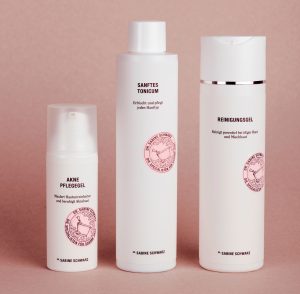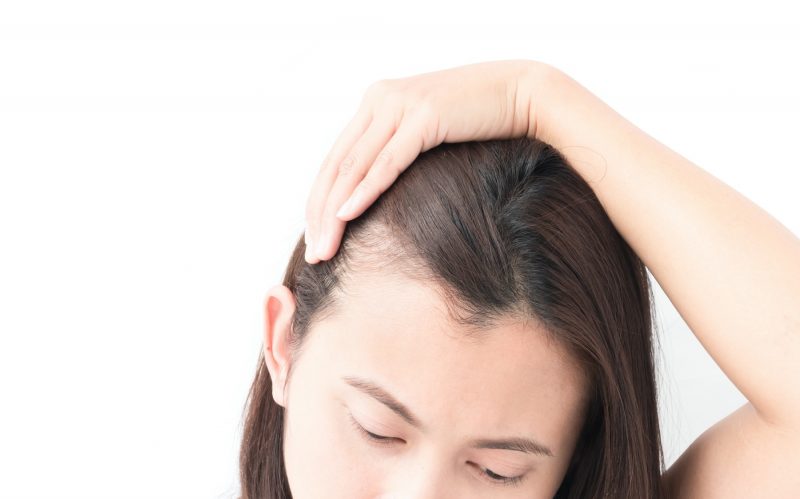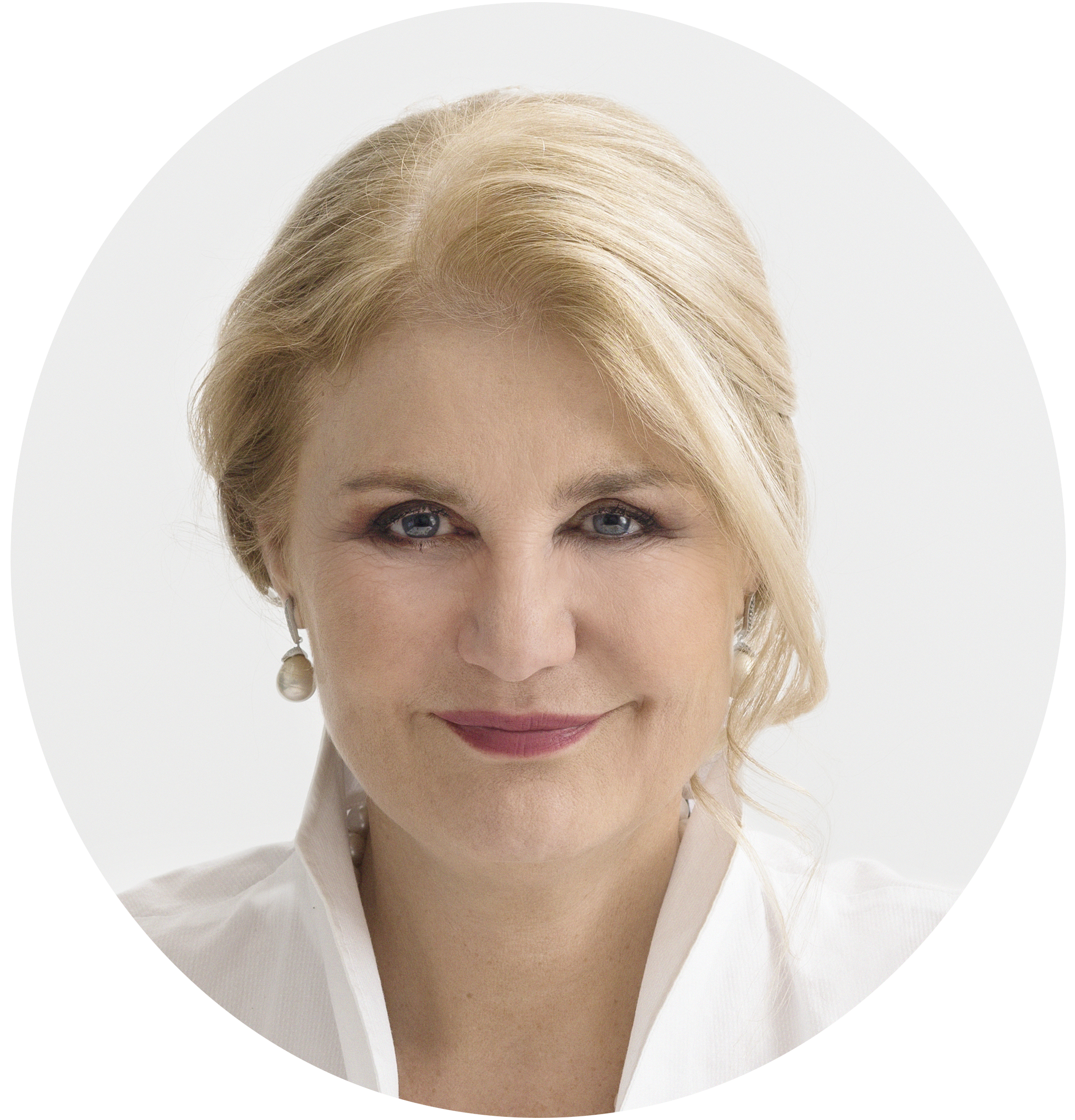Hair – too little on the head and too much on the body? Here’s what you can do!
By Dr. Sabine Schwarz and
guest author university professor Dr. Johannes Huber (DDr.), gynaecologist and hormone specialist
Hello to anyone interested in the skin!
Since there was a huge response to my last article on hair and hair loss and many questions on your part, I would like to come back to this topic once again.
Since hair growth and loss are directly related to hormones and our physical and mental health, I am pleased to introduce you to the hormone specialist, university professor Dr. Johannes Huber (DDr). He will give you some great information as well as valuable tips.
After some general information about our hair, together with Dr. Huber, I will give you an insight into common, congenital hormonal hair loss and the unwanted body hair that often accompanies it.
General information about hair
Hair is a particularly important signal of attractiveness, health and vitality for both women and men. Our hair consists largely of keratin containing water, oily fats, and the pigment melanin responsible for the colour of the hair. A hair grows from the hair root for four to six years, about 1.2 cm every month, and then falls out. The natural daily hair loss is about thirty to fifty hairs and even up to a hundred when washing.
Hair grows in constant cycles, almost 85% of hair follicles are in the growth phase; this lasts about two to six years. This is followed for each 1 to 2% of the hair by a transitional or degradation phase of about two months, finally ending in the resting or fall-out phase. This resting phase affects about 10% of the hair and lasts about three months until new hair is formed and the cycle begins again.
Hair loss and thinning hair – why?
Androgenetic hair loss (hair loss caused by androgens and genetics) is the most common form of hair loss and a normal phenomenon of aging. It affects about 80% of men worldwide and 50% of women, especially after menopause. So what are androgens anyway and how do they work?
Univ. Prof. DDr. Huber:
“Androgens are male hormones and the “counterparts” of the female hormone estrogen. Among other things, they affect our bones, connective tissue, skin, body weight and psyche. Furthermore, like all sex hormones, they are additionally linked to other hormone producers such as the thyroid gland (thyroid hormones), the pituitary gland (growth hormones) or even the pancreas (insulin).”
What can the doctor do?
At Hautzentrum Wien we will be happy to advise you in our hair consultation session on all problems of hair loss or poor hair quality. In a detailed talk you will inform us about your dietary habits, stress factors, lifestyle, positive family history and much more. Through special bloodwork and by determining the hormone status, we can clarify internal causes. We can also digitally record and photograph the condition of the scalp and hair. Therapy ranges from special external tinctures and important vitamins and minerals to special medications. If this leads us to suspect that hormones can be contributors or even the main cause, we can involve hormone specialists.
Univ. Prof. DDr. Johannes Huber:
“Hormones have a massive influence on our skin and hair. For example, many women complain of bad skin (“hormone acne”) or hair loss after pregnancy, during menopause or after stopping the birth control pill. Familial hair loss in both men and women indicates a hereditary hypersensitivity of the hair follicles to the male hormone testosterone or its derivative dihydrotestosterone (DHT). Studies have shown that testosterone is present in much higher concentrations in the thinning or balding areas of the scalp than in the areas with normal hair growth. In women, the female hormone oestrogen is often also reduced. Determining the hormone status, the typical appearance of hair loss in men and women (temples, hairline and top of the head) and a supplementary blood count provide information. Therefore, many therapies rely on reducing the effect of male hormones.”
Various mixtures for topical application help at the thinning scalp areas. They contain the female hormone oestrogen or an anti-testosterone (blocks the male hormone locally). However, the right hormones in the right dosage can also significantly improve hair loss from the inside. Natural substances can help restore hormone balance and reduce hair loss.
In addition to hormones, there are local growth-promoting tinctures (e.g. Regaine®) and the remarkably successful therapy with blood plasma. Plasma cells containing special growth factors for the hair roots are obtained from the patient’s own blood. These are introduced into the scalp with exceptionally fine needles and in 70% of cases show visible improvements after just one to three treatments.
What can I do myself?
General tips
Download (PDF – 248 KB)
Support through natural hormone preparations
Download (PDF – 143 KB)
Important vitamins/trace elements/minerals
Download (PDF – 147 KB)
Increased body hair – why?
With increased body hair, as in the case of androgenetic hair loss (see above) or hormonal acne, genetics and hormones again play the main role. These changes hence often occur in combination. In women, this excessive body hair, which is often accompanied by hair loss and acne, is also called hirsutism (the masculinisation effect).
What can the doctor do?
An analysis of the hormone status will provide information. As with hair loss in both men and women, the options for internal therapy are to regulate testosterone. Local therapies such as Vaniqa (inhibits hair growth) or local testosterone blockers are usually not effective enough on their own. A special laser can provide a remedy. It attacks the hair directly at the root with its special wavelength and thus reduces growth in the long term. In contrast to the pure heat effect of the IPL lamp for depilation offered in beauty salons, laser treatment is low-risk, low-pain and efficient. On average, four to six treatments reduce growth by about 80%. Read more about it: Aesthetics body/epilation laser.
What can I do myself?
Avoid shaving the increased body hair. It is better to remove the hair with epilation or waxing because these “mini traumas” irritate the hair root in the long term and thus the hair often grows back at least finer. For more tips, please see the tables above.
Yours, Dr. Sabine Schwarz






